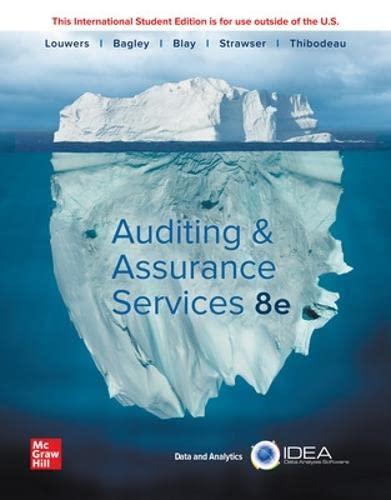Question
Part 1: Broze Company makes four products in a single facility. These products have the following unit product costs: Product A B C D Direct
Part 1:
| Broze Company makes four products in a single facility. These products have the following unit product costs: |
| Product | ||||
| A | B | C | D | |
| Direct materials | $21.30 | $17.20 | $18.00 | $17.60 |
| Direct labor | 26.40 | 34.40 | 40.60 | 47.40 |
| Variable manufacturing overhead | 11.30 | 9.70 | 9.60 | 10.20 |
| Fixed manufacturing overhead | 33.50 | 41.80 | 33.60 | 44.20 |
| Unit produced cost | $92.50 | $103.10 | $101.80 | $119.40 |
Additional data concerning these products are listed below.
| Product | ||||
| A | B | C | D | |
| Grinding minutes per unit | 4.50 | 6.00 | 5.00 | 4.10 |
| Selling price per unit | $79.60 | $97.00 | $90.90 | $107.70 |
| Variable selling cost per unit | 2.90 | 1.90 | 4.00 | 2.30 |
| Monthly demand in units | 4,700 | 4,700 | 3,700 | 2,700 |
| The grinding machines are the constraint in the production facility. A total of 67,600 minutes are available per month on these machines. Direct labor is a variable cost in this company. |
| How many minutes of grinding machine time would be required to satisfy demand for all four products? |
20,000.
67,600.
78,920.
57,770.
Part 2:
| Roswell Inc has 6,600 machine hours available each month. The following information on the company's three products is available: |
| Product 1 | Product 2 | Product 3 | ||||
| Contribution margin per unit | $ | 21.00 | $ | 36.00 | $ | 13.50 |
| Machine hours per unit | 3.00 | 2.00 | 1.00 |
| If market demand exceeds the available capacity, in what sequence should orders be filled to maximize the company's profits? |
Product 3 first, product 1 second, and product 2 third.
Product 1 first, product 2 second, and product 3 third.
Product 2 first, product 3 second, and product 1 third.
Product 3 first, product 2 second, and product 1 third.
Part 3:
| The Speedy Delivery Service is considering the expansion of its business into afternoon retail delivery service. This would require an additional $31,000 in labor costs per month. Company-owned vehicles now used to make morning deliveries to local manufacturers could be used in the afternoons to make retail deliveries. However, it is estimated that an additional $16,000 would be required per month for gas, oil, and maintenance. It is further estimated that the retail delivery use of the trucks would be allocated 45% of the existing $19,000 fixed vehicle costs. What is the differential delivery cost per month for expanding into the retail delivery market? |
$47,000.
$31,000.
$55,550.
$51,500.
Step by Step Solution
There are 3 Steps involved in it
Step: 1

Get Instant Access to Expert-Tailored Solutions
See step-by-step solutions with expert insights and AI powered tools for academic success
Step: 2

Step: 3

Ace Your Homework with AI
Get the answers you need in no time with our AI-driven, step-by-step assistance
Get Started


